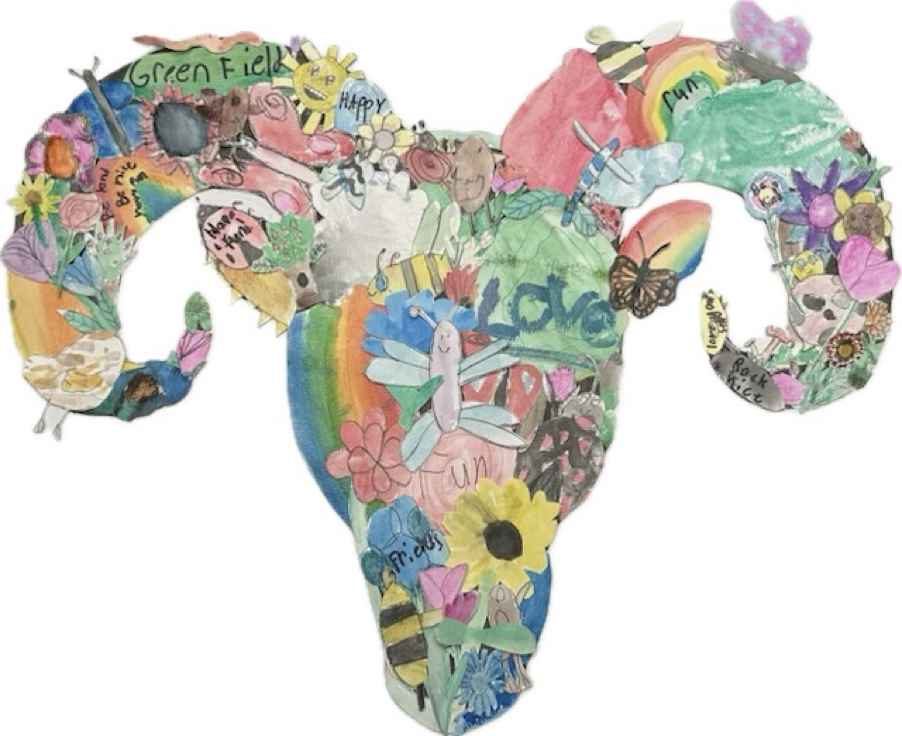The Arts, Creative Thinking, and Peace
“The arts can open the door to the imagination, pushing the envelope of how peace can be created. It takes courage to take this kind of risk, and courage is what we all need to create a better world.” ~ Wayne Shorter, saxophonist and composer.
Artistic expressions, whether through acting, music, visual arts, or other artistic expressions, frequently illustrate social problems and personal difficulties shared by many people and societies. Many wish for peaceful resolutions to the expressed social problems. Peace requires sharing solutions in a psychologically safe environment, while finding more lasting solutions demands creativity beyond the realms of economics, engineering, and science.
Artistic expression is a form of communication, and open communication is crucial for avoiding conflict. Conflict and its opposite, the joy and love of being with others and the appreciation and respect for others, are inherently emotional. Our beliefs, the causes we fight for, and what we hold dear are driven by emotions, not just rational thought. A shared goal for peace will have a strong emotional component and that component can be conveyed through artistic expression.
Art does not necessarily need to have an explicit meaning; it can just be for its aesthetic qualities. In this article, however, I am taking the stance that artists can use their skills and passions to convey a mission for nurturing peace.
Compassion, Creativity and Peace
The quotes at the end of the article address the concept that compassion and awareness are integral to the arts and creative thinking, playing a crucial role in peacebuilding. The arts can serve as a powerful bridge, connecting hearts and minds, creating social exchanges which are vital in maintaining harmony. The arts inspire empathy and convey profound messages, reminding us of our common humanity, which can help forge international links through the universal language of the arts.
Addressing social change in an effort to move towards a more peaceful place goes beyond the intellectual level, as mentioned above. Emotions are inherently involved in resolving or avoiding conflict, and the arts effectively reinforce and develop compassion and empathy, encourage flexible thinking, and a willingness to view situations from multiple perspectives.
Through artistic expression, we can foster empathy, provoke critical thinking, and inspire peace-building. The arts, coupled with compassion and awareness, can help provide the emotional and creative foundation necessary to address and solve the multifaceted challenges of achieving peace.
Here is an sample of an classroom initiative for peace building
A third grade teacher in the city of Philadelphia asked her students to think how they would express understanding and inclusion in their school. The children were free to express their thoughts anyway they wished. Two nine year old boys wrote the following poem.
Don’t judge a book by its cover,
Don’t judge people by their color.
No matter their actions or beliefs,
Different cultures need not beef.
Don’t be mean, be nice, be better.
Be better than ever
By writing a letter.
When they go low, we go above
We’re not the school of hate,
We’re the school of love.
Big or skinny all people are pretty.
If boy or girl or the middle you fall,
All are welcome in our school and city.
Don’t be mean, be nice, be better.
Be better than ever
By writing a letter.
When they go low, we go above
We’re not the school of hate,
We’re the school of love.
Tristan Serra and Alejandro Peredo-Carabe
Their music teacher put these words to music and the class sung it at the end of the school assembly. One thing led to another. It was not planned. Art, in its different forms, can be a powerful catalyst for peace.
Creativity QUOTES that embrace peace and or compassion - Taken from DoOneThing.org
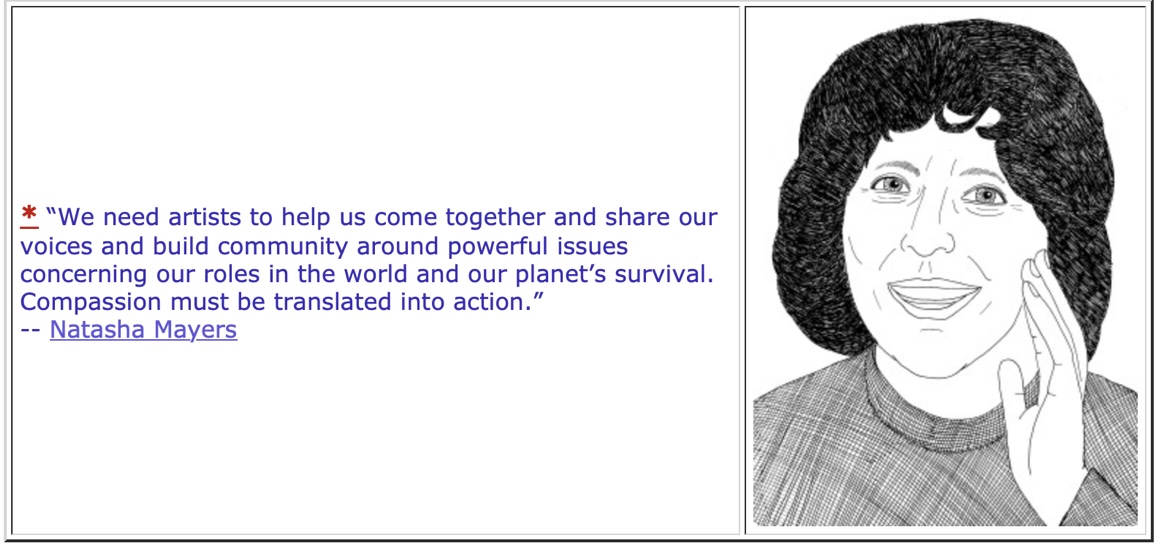
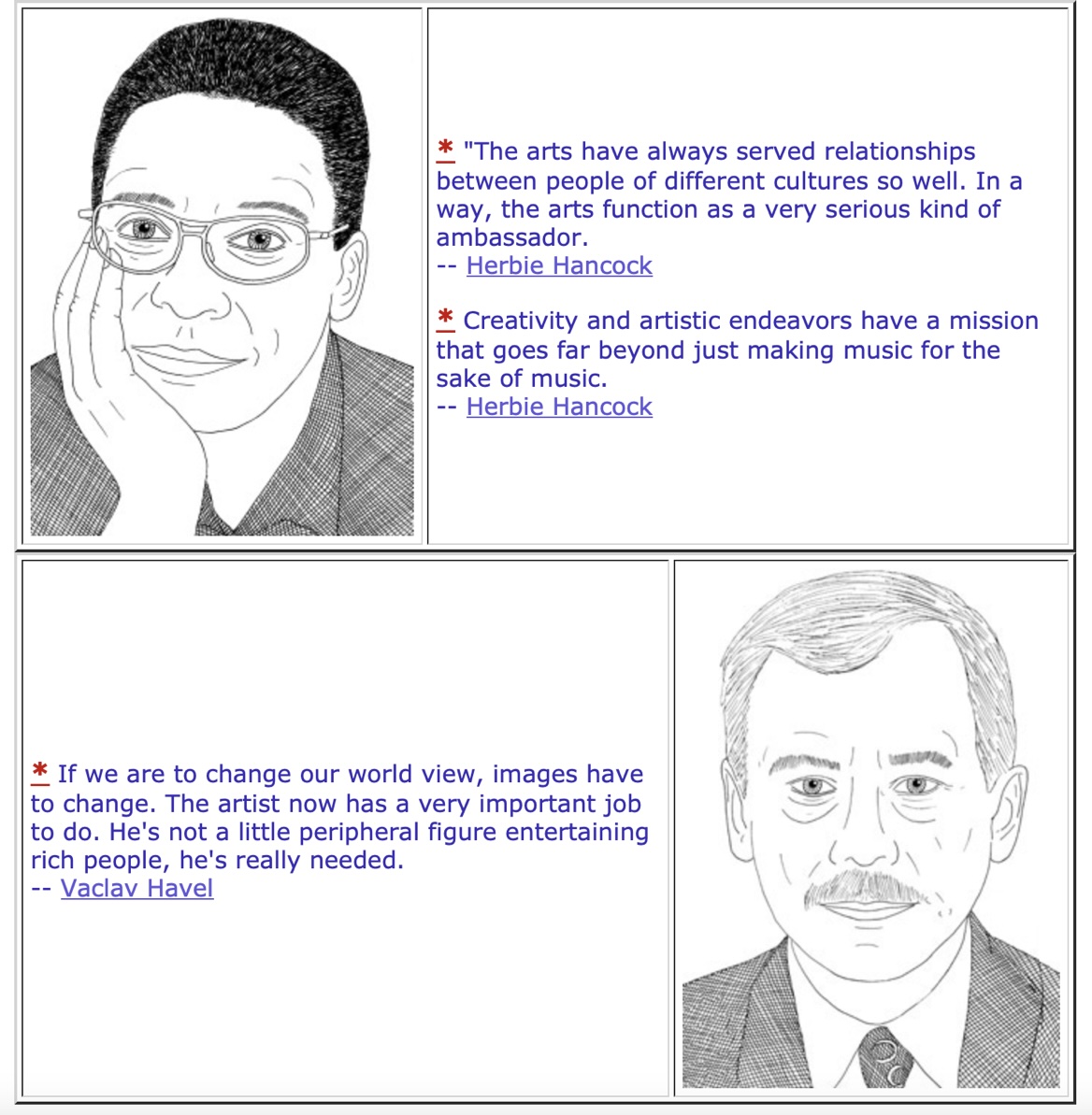
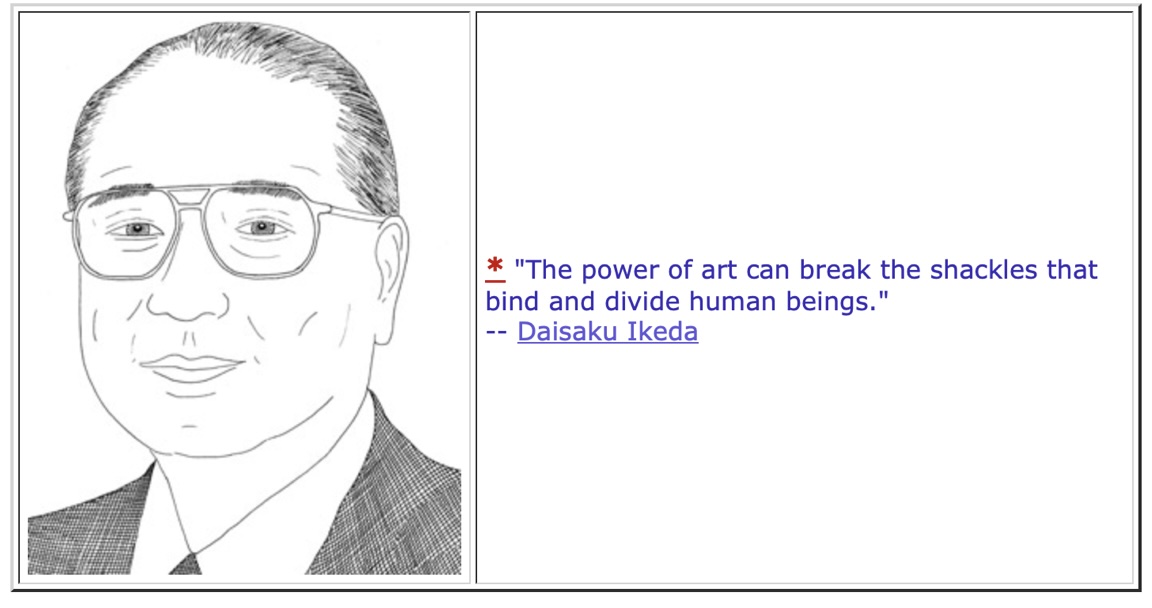
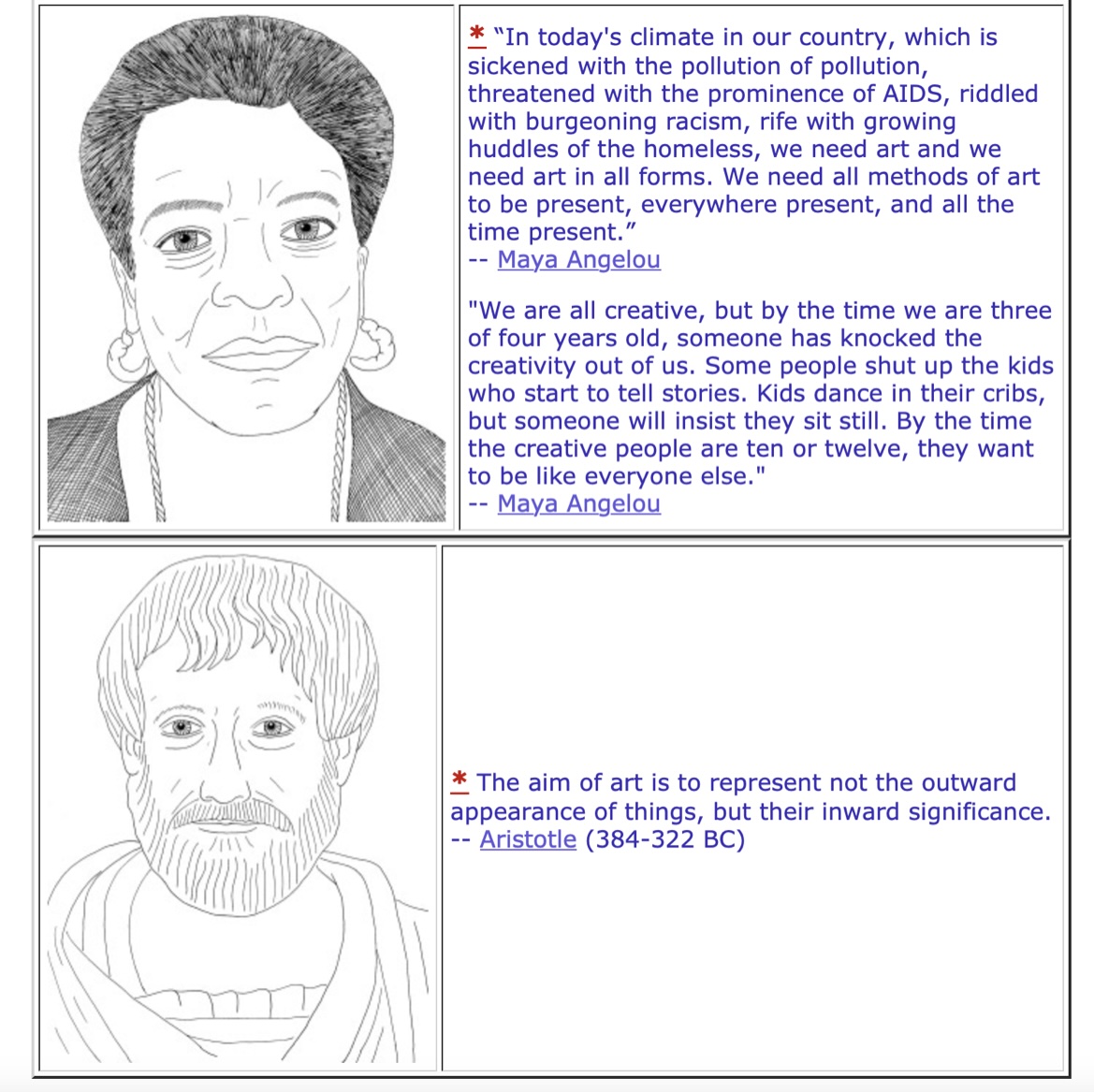

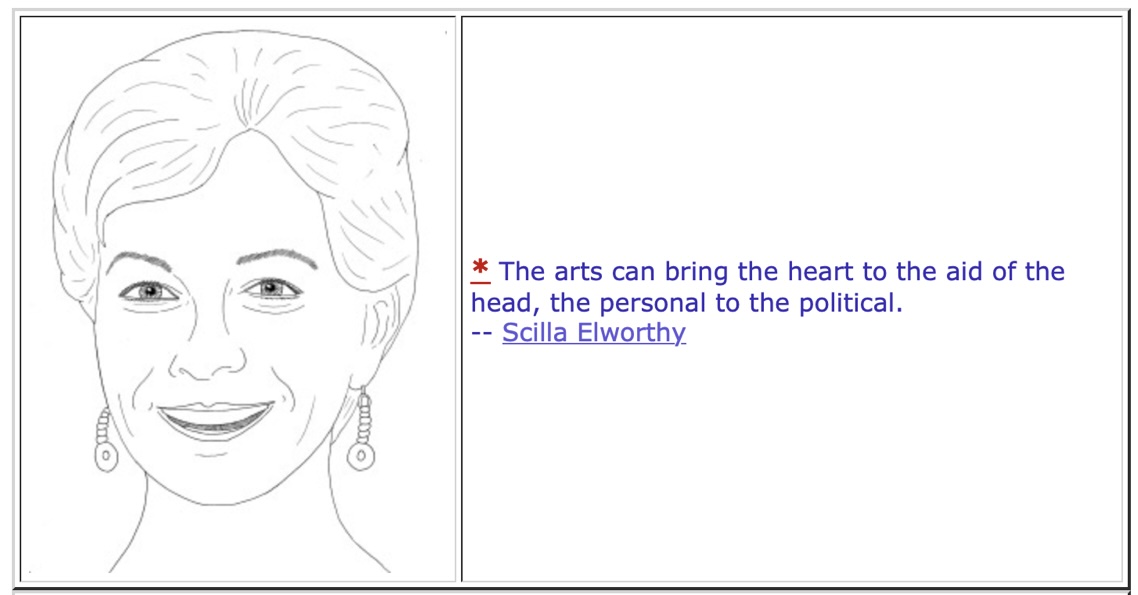
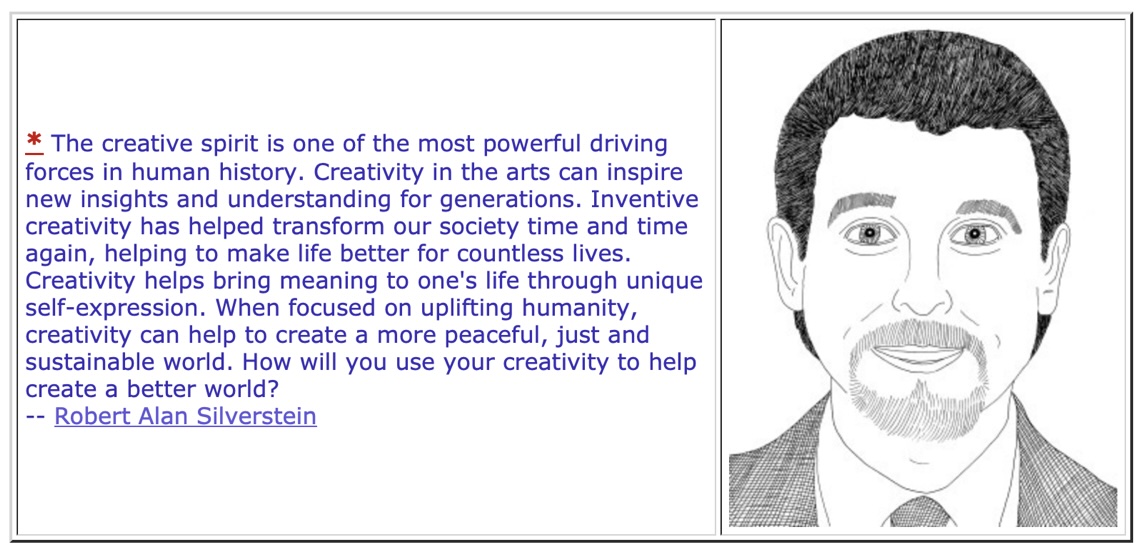
Notes:
-
Handouts of Citizenship quotes on creativity. Taken from this website, Do One Thing Issues for a Better World
-
Using the Arts to Build Empathy, the Ultimate 21st Century Skills. What will the world look like when our students leave school? By Deirdre Moore – May 2013
-
TAA ebook- The Art Association, an International Community of Artists for Peace, a Swiss non-profit association
-
Quote for Wayne Shorter. https://www.azquotes.com/author/24060-Wayne_Shorter
Contributor: Marcia Banks
